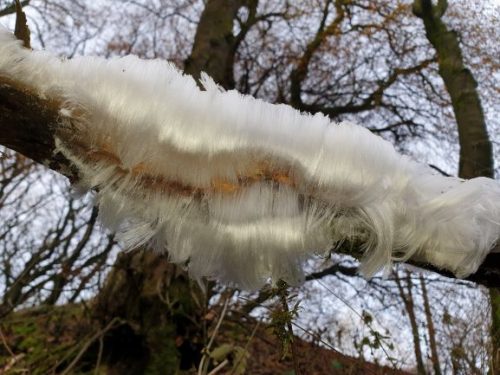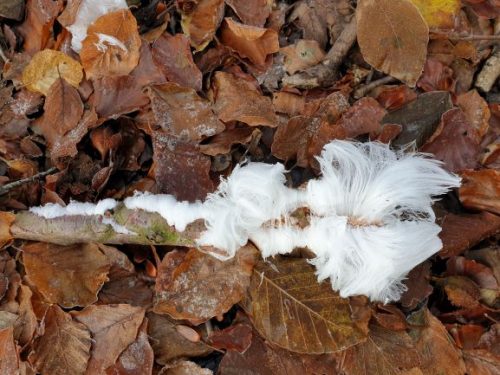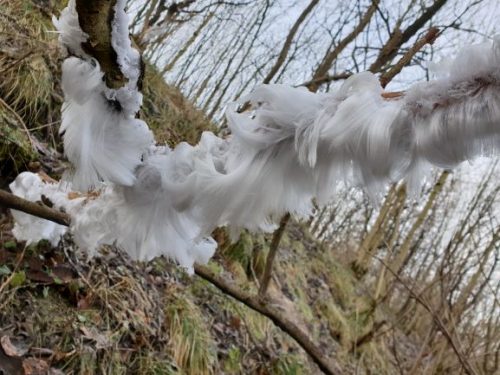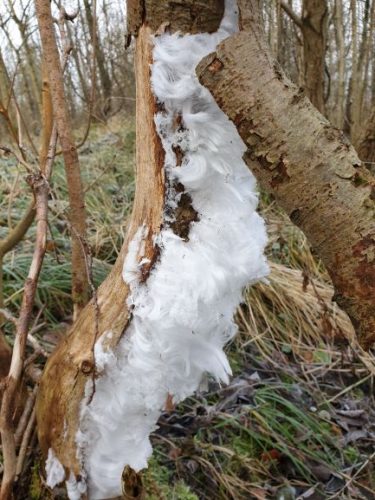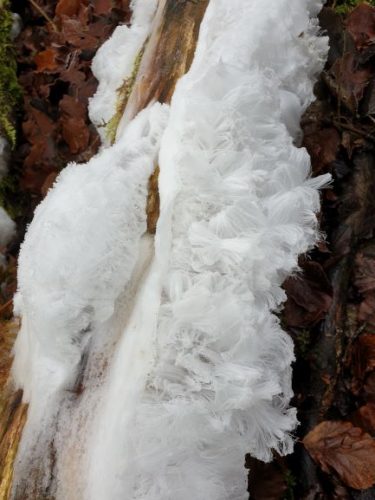Hairice in Grin Woods
Thank you to Prof Richard Pattrick for these fascinating photographs of hairice forming in dead trees in Grin low during the recent cold spell.
The following explanation has been taken from Wikipedia
Hair ice forms on moist, rotting wood from broadleaf trees when temperatures are slightly under 0 °C (32 °F) and the air is humid.[1] Each of the smooth, silky hairs has a diameter of about 0.02 mm (0.0008 in) and a length of up to 20 cm (8 in).[1] The hairs are brittle, but take the shape of curls and waves.[1] They can maintain their shape for hours and sometimes days.[1] This long lifetime indicates that something is preventing the small ice crystals from recrystallizing into larger ones, since recrystallization normally occurs very quickly at temperatures near 0 °C (32 °F).[1]
The hairs appear to root at the mouth of wood rays (never on the bark), and their thickness is similar to the diameter of the wood ray channels.[1] A piece of wood that produces hair ice once may continue to produce it over several years.[1]
In the year 2015, German and Swiss scientists identified the fungus Exidiopsis effusa as key to the formation of hair ice.[1] The fungus was found on every hair ice sample examined by the researchers, and disabling the fungus with fungicide or hot water prevented hair ice formation.[1] The fungus shapes the ice into fine hairs through an uncertain mechanism and likely stabilizes it by providing a recrystallization inhibitor similar to antifreeze proteins.[1][2]
